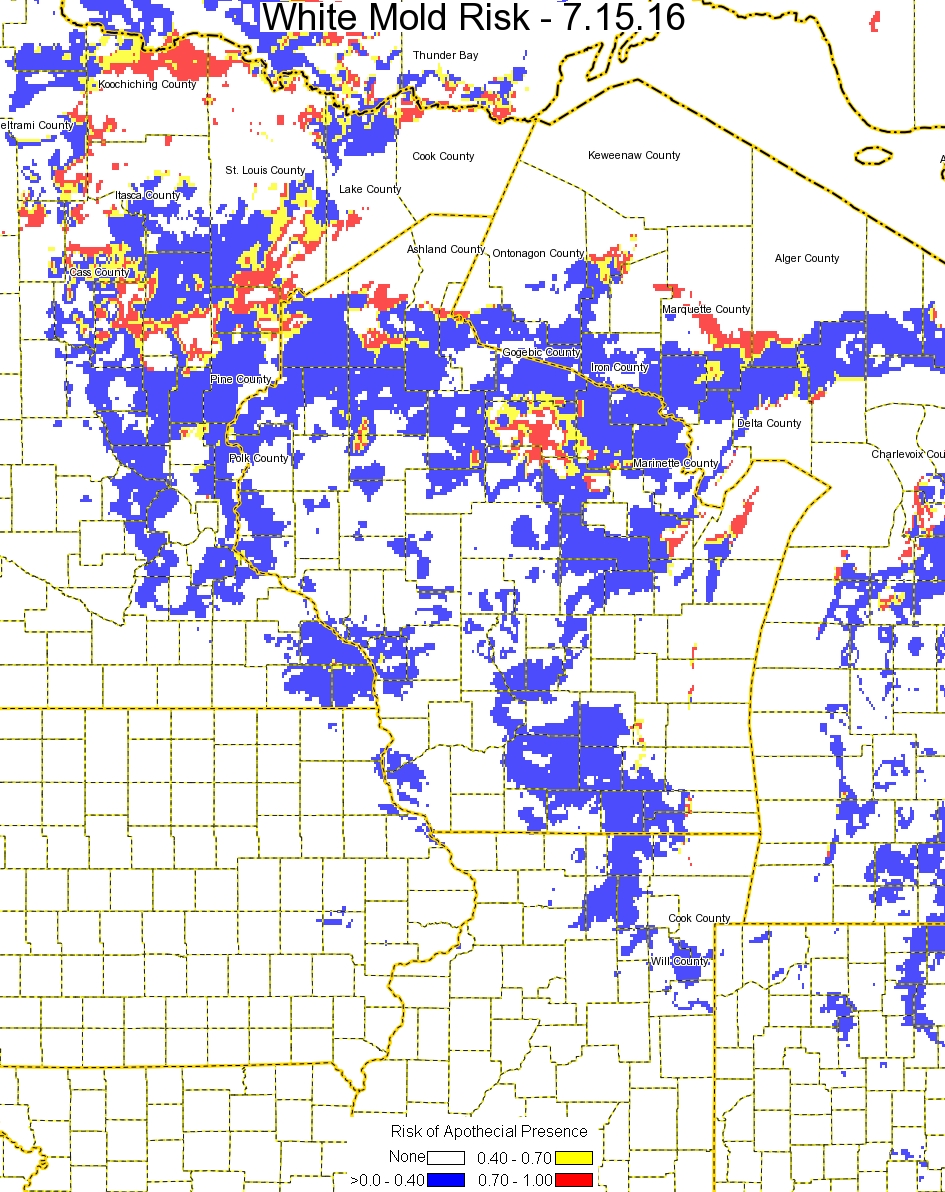Wisconsin White Mold Risk Map – July 15, 2016
Damon L. Smith, Extension Field Crops Pathologist, University of Wisconsin-Madison
Jaime Willbur, Graduate Research Assistant, University of Wisconsin-Madison
Sclero-cast: A Soybean White Mold Prediction Model
**This tool is for guidance only and should be used with other sources of information and professional advice when determining risk of white mold development. We encourage you to read the model how-to guide which can be downloaded by clicking here**
Risk of apothecial presence and subsequent white mold development has increased slightly in the south central portion of Wisconsin since the last posting on July 11 (see map below). Three-day forecasts show continued increase in the south and central portion of the state. While the risk may increase slightly, the risk is low to moderate. The UW Field Crops Pathology crew has been scouting for apothecia and has observed low numbers of apothecia in naturally infested, dry-land fields in Columbia Co. The prediction model forecasted this event earlier last week in this location. In irrigated fields around Hancock, larger numbers of apothecia have been observed. Risk in this portion of the state has been shown to be low (blue color), however, irrigation modifies this risk to a more moderate level. Growers who irrigate or are near moderate- or high-risk pockets should be considering their fungicide application options now. The window of opportunity to apply fungicide to control white mold in soybean is between the R1 and R3 growth stages. Be sure to consult the how-to guide for assistance in interpreting this map if you are considering spraying fungicide to control white mold.



